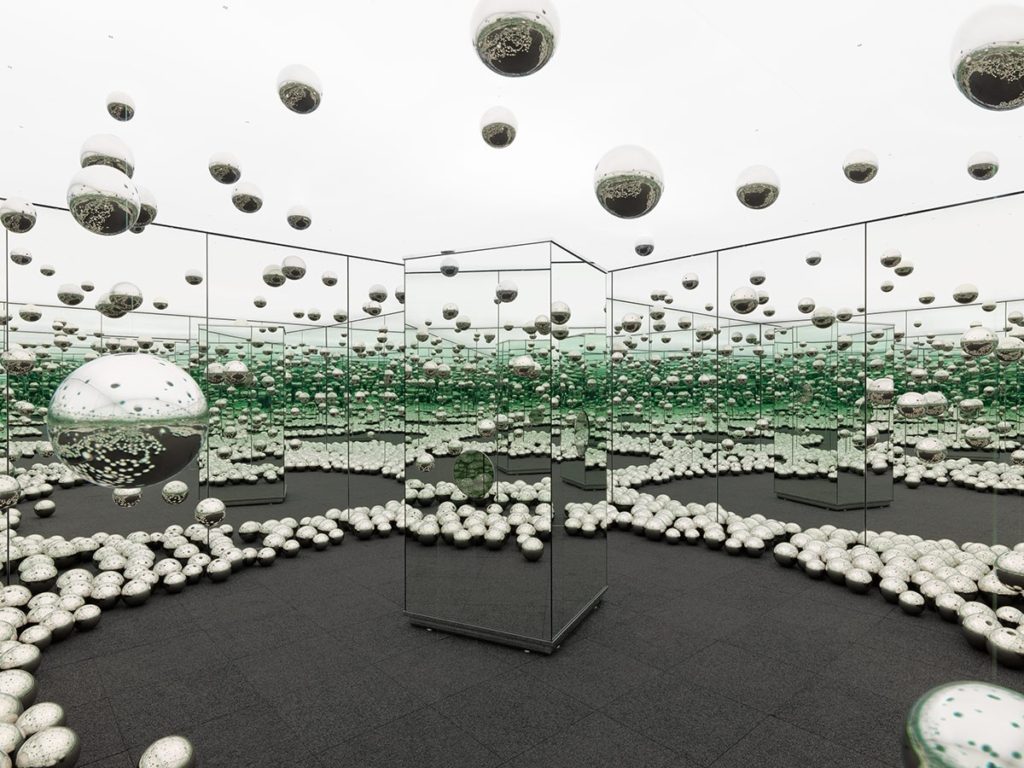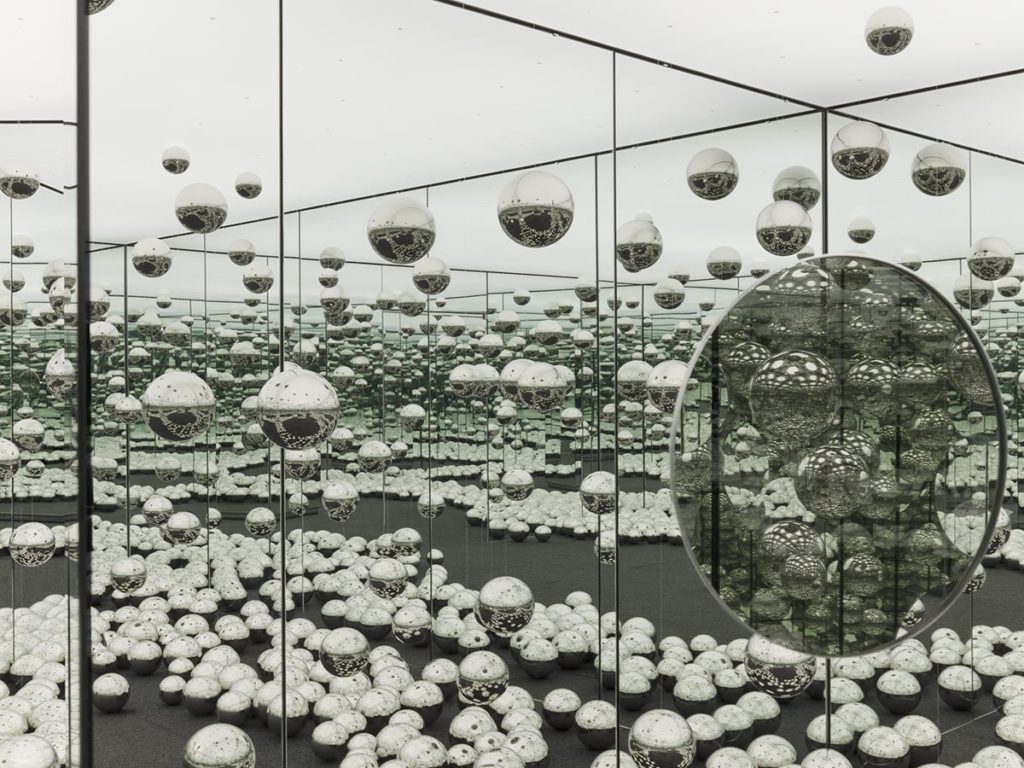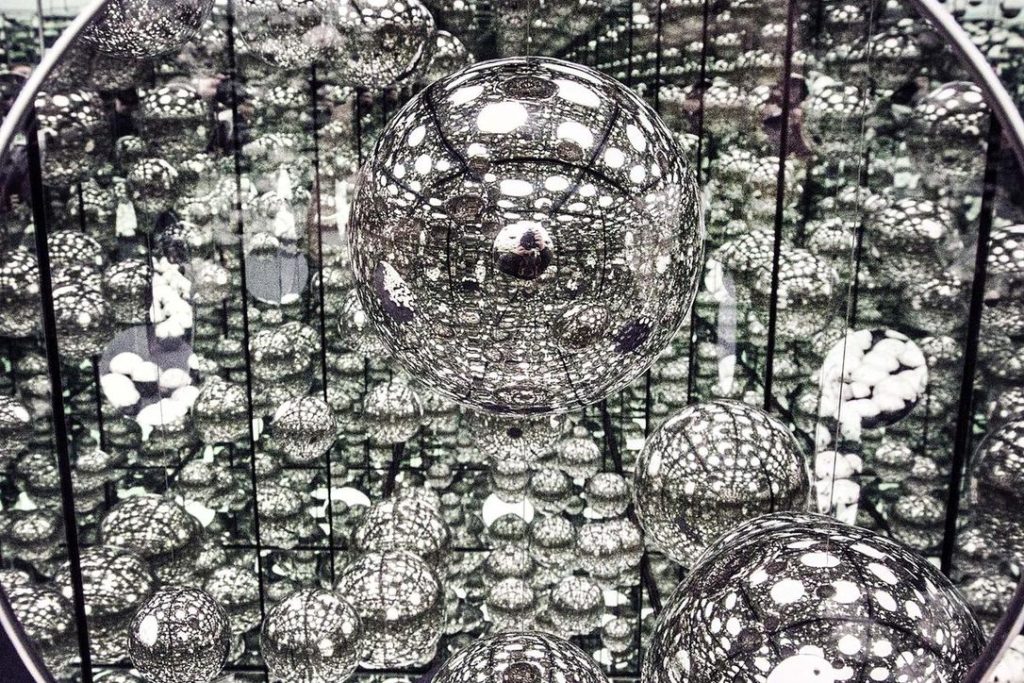The AGO’s very own (and very popular) Kusama mirrored room just celebrated its six-month anniversary. We spoke with Art Services Technician Angelo about the four-week installation process that preceded the May 25 public opening.
The full Kusama show in 2018 had its own tech that showed the AGO team how all the pieces went together. With that experience, it was easier to figure out this next one – like putting together your first IKEA bookshelf, says Angelo. The new work, created in 2017, had been displayed once before at the David Shiner gallery in New York, but as it was going to become part of the AGO’s permanent collection and be on display indefinitely, a new approach was needed, as was a lot of team work and problem solving.

Part one was to level the floor so the mirrored walls would line up perfectly. This was done with the aid of a laser level. Next up were the walls themselves, which were very heavy and awkward to move. The metal rails they now sit on had to have their screw heads covered with tape so the walls balanced properly. Only the first three walls were installed so the rest of the items could be put in. Unlike the temporary exhibition, Let’s Survive Forever had to be built for a multi-year period, so the team reinforced the sides to keep them from moving when the heavy door swings open.
After the walls, the team put on a stretched ceiling with LED panels already installed. To hang the large balls from the ceiling, they mapped their positions first on the floor, then lasered up to spots on the ceiling. One worker would then balance on a beam on top of the unit while another one below would hand up the balls for him to tie on to an attachment grid.
Next was the carpet – it is dark and hides many sins, but does need to be vacuumed twice a day, as it pills and lots of the dust gets on the balls. It will replaced after winter. Before the final wall was installed, the team put in the central mirrored column, onto which the (very heavy) lid with its own attached mirrored balls was lowered.

Each installation project has its own unexpected quirks. For Angelo, working within the mirror room began to have an effect on his sense of depth perception, as he had to ignore the reflected image to stay focused on where the actual surface was. After several months of work, he can see all of the seams between the individual mirrors, though for most visitors they remain invisible during their one-minute visit.
In terms of maintenance, the balls are swiffered and the mirrors microfibred to get rid of finger and nose prints. Occasionally balls need to be restrung after visitors have pushed them to make them swing. There was originally a map of the floor balls but it now a bit more”organic” due to constantly shifting ball placement. One thing that can’t always be anticipated is visitor interaction with such a work. As with the Narcissus Garden, people often send the floor balls rolling (intentionally or not) so the team has started placing the balls on small rings, which visitors will often spy on the ground if a ball has shifted and bring to the staff as a lost “elastic”.
At the time of the interview Angelo had moved on to the next big challenge – the Hito Steyerl installation. With so many videos to install and synchronize it required a whole new set of skills – ones that his team is happy to leverage.
